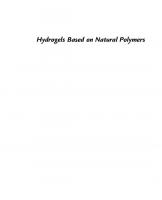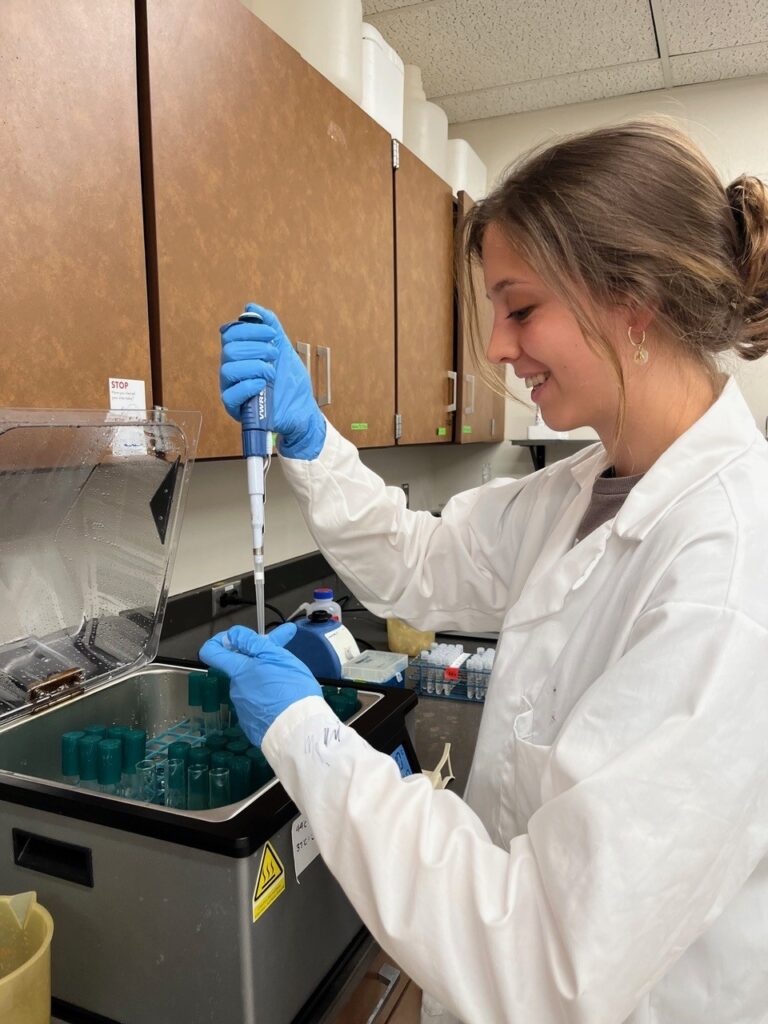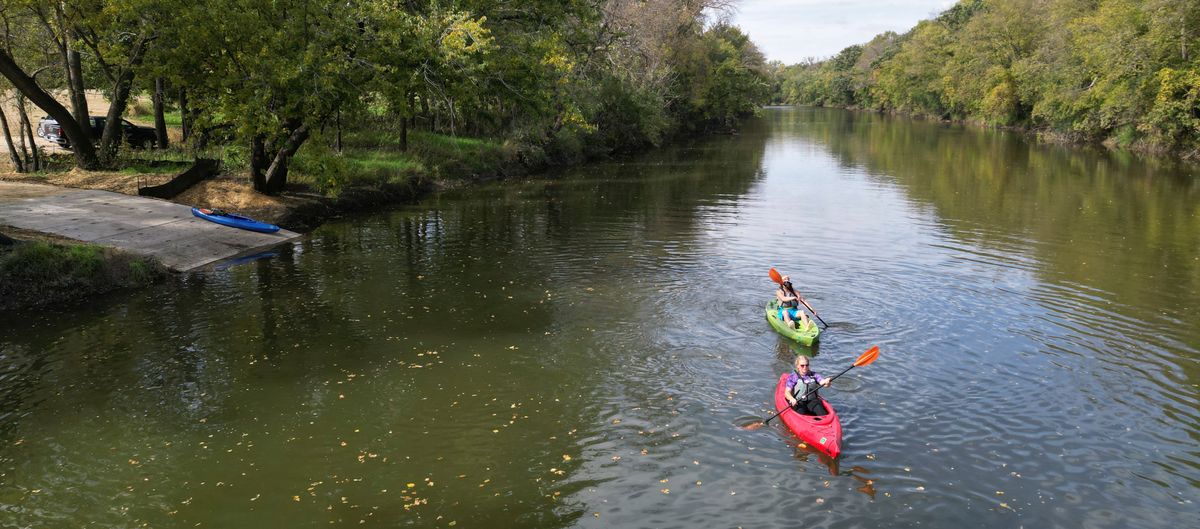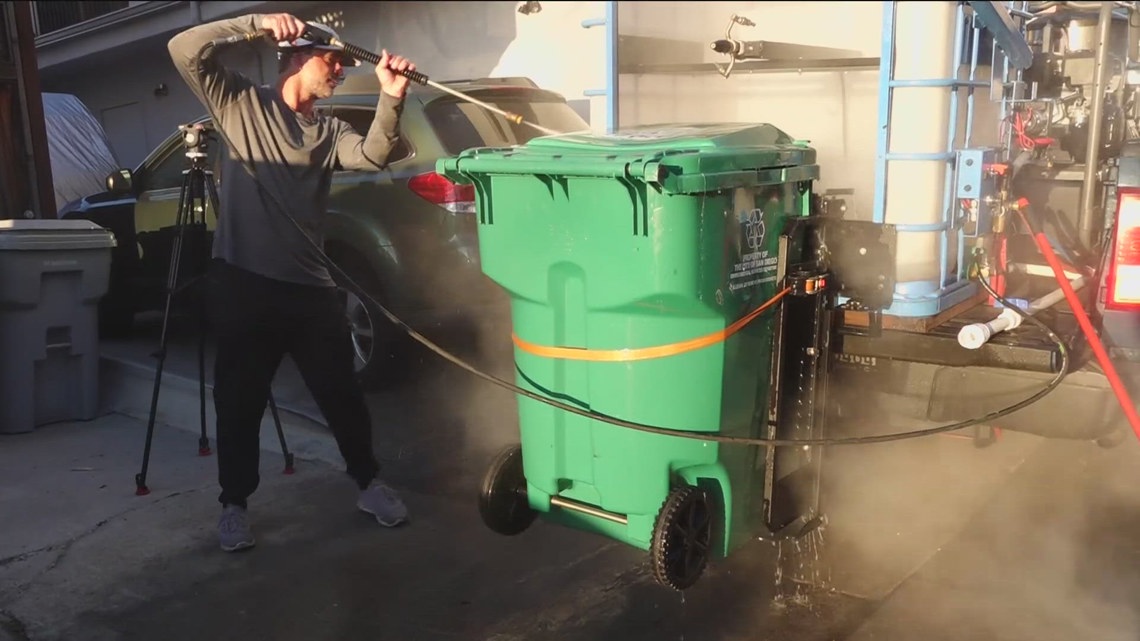Removal of E. coli O157:H7 coliform bacteria from sewage wastewater using silver doped borate bioglass – Nature

Report on the Removal of Coliform Bacteria from Sewage Wastewater Using Silver-Doped Borate Bioglass
Executive Summary
Addressing the global challenge of freshwater depletion, as outlined in Sustainable Development Goal 6 (Clean Water and Sanitation), this report details an innovative study on the reuse of treated sewage wastewater (SWW). An advanced silver borate-based bioglass (BG) system was developed as a cost-effective and eco-friendly technology for SWW purification. The study focused on eliminating fecal coliform bacteria, particularly the pathogenic strain Escherichia coli O157:H7, a critical step in safeguarding public health and meeting the targets of SDG 3 (Good Health and Well-being). The BAg1 bioglass sample, containing 1 mol% Ag2O, demonstrated superior antibacterial activity, achieving 95.31% growth inhibition of E. coli O157:H7 and nearly 100% inhibition of the general coliform community. These findings present a significant advancement in water treatment technology, supporting the sustainable management of water resources and promoting safe water reuse for non-potable applications, thereby contributing directly to multiple SDGs.
1.0 Introduction: Addressing Global Water Challenges Through Sustainable Innovation
The escalating demand for freshwater due to industrialization, urbanization, and population growth has placed immense pressure on global water resources, a core concern of SDG 6. The contamination of available freshwater by sewage wastewater, laden with chemical and microbial pollutants, poses a severe threat to both environmental sustainability and human health. In developing nations, contaminated water is a primary source of disease, directly hindering progress towards SDG 3.
Wastewater reuse has emerged as a critical strategy for sustainable water management, aligning with the principles of a circular economy and SDG 12 (Responsible Consumption and Production). However, effective purification is paramount. Conventional treatment methods often face challenges in completely eliminating resilient pathogens. Fecal coliforms, especially pathogenic strains like E. coli O157:H7, serve as key indicators of fecal contamination and present a significant risk of water-borne illnesses such as hemorrhagic colitis and hemolytic uremic syndrome.
This report outlines the development and evaluation of an innovative purification system based on silver-doped borate bioglass (BG). This technology leverages the known antibacterial properties of silver ions within a stable, eco-friendly glass matrix. By creating a cost-effective and highly efficient method to remove dangerous pathogens, this research contributes to SDG 9 (Industry, Innovation, and Infrastructure) by advancing water treatment infrastructure and providing a scalable solution to improve water quality, protect public health, and ensure the sustainable use of water resources for communities, as envisioned in SDG 11 (Sustainable Cities and Communities).
2.0 Methodology for Sustainable Water Purification
2.1 Materials and Sample Preparation
- Bioglass Composition: A series of silver-doped borate-based bioglass (BAgX) samples were prepared with the molar composition (65-X)B2O3–20Na2O–10CaO–5P2O5–XAg2O, where X = 0, 1, 2, 3, and 4 mol%.
- Chemicals: Precursor chemicals included NH4H2PO4, H3BO3, CaCO3, Na2CO3, and Ag2O, all of 99.90% purity.
- Wastewater Samples: Raw sewage wastewater (SWW) was collected from the Mansoura wastewater treatment facility in Egypt.
- Bacterial Isolate: The pathogenic indicator strain, E. coli O157:H7, was used to rigorously test the purification efficacy, directly addressing the health targets of SDG 3.
2.2 Bioglass Synthesis and Characterization
The development of this novel material represents a key innovation aimed at improving water infrastructure (SDG 9).
- Synthesis: The bioglass samples were fabricated using the melt-quenching method. Precursor powders were melted at 1150 ± 10 °C, rotated for homogeneity, and then quenched in a stainless-steel mold before being annealed.
- Processing: The resulting glass discs were ground into a fine powder with an average particle size of approximately 10 µm to maximize surface area for reactivity.
- Characterization: The structural, morphological, and elemental properties of the bioglass samples were analyzed using:
- Fourier Transform Infrared (FTIR) Spectroscopy
- X-ray Diffraction (XRD) Spectroscopy
- Scanning Electron Microscopy (SEM)
- Energy-Dispersive X-ray (EDX) Spectroscopy
- Dynamic Light Scattering (DLS)
2.3 Wastewater Treatment and Efficacy Assessment
To validate the technology’s potential to contribute to SDG 6, a comprehensive evaluation of its purification performance was conducted.
- Coliform Removal (Standard Plate Count): SWW samples were treated with 20 mg/mL of each BAgX sample. The survival of coliform bacteria was assessed by plating on MacConkey agar, with removal efficiency calculated against untreated controls.
- Coliform Enumeration (Most Probable Number): The MPN technique was used to quantify coliform counts in treated SWW, providing a standardized measure of water quality improvement.
- Pathogen Confirmation: A confirmation test using EC broth and TBX agar was performed to specifically verify the elimination of E. coli from the treated water samples.
- Antibacterial Activity Assays:
- Agar Well Diffusion: The inhibition zones created by the BAgX samples against E. coli O157:H7 were measured to quantify antibacterial potency.
- MIC and MBC Determination: The Minimum Inhibitory Concentration (MIC) and Minimum Bactericidal Concentration (MBC) were determined to establish the lowest effective doses for inhibiting and killing the target pathogen.
- Mechanism Investigation: SEM was used to visualize the morphological damage to E. coli O157:H7 cells after treatment, providing insight into the bactericidal mechanism.
3.0 Results and Discussion: Efficacy and Implications for Sustainable Development
3.1 Characterization of the Bioglass System
Characterization confirmed the successful synthesis of an amorphous, silver-doped bioglass system. XRD analysis showed a broad hump characteristic of an amorphous structure, indicating that silver was successfully incorporated without inducing crystallization. SEM and EDX confirmed a homogeneous surface and the presence of all intended elements, including silver. DLS analysis revealed that the silver-doped BAg1 sample had a smaller average particle size (380 ± 65 nm) compared to the undoped BAg0 sample (738 ± 151 nm), a key factor influencing its higher reactivity and antibacterial efficacy. This successful material design is a direct contribution to innovation in sustainable technologies (SDG 9).
3.2 Efficacy in Wastewater Purification and Contribution to SDG 6
The primary goal of this research was to develop a technology capable of treating wastewater to a standard safe for reuse, directly supporting SDG Target 6.3 (halve the proportion of untreated wastewater and substantially increase recycling and safe reuse globally).
- Coliform Eradication: All silver-doped bioglass samples (BAg1, BAg2, BAg3, and BAg4) demonstrated exceptional performance, achieving approximately 100% removal of the coliform bacterial community from SWW samples. In contrast, the undoped BAg0 sample showed minimal effect.
- MPN Reduction: The MPN tests confirmed these results. The BAg1 sample was the most effective, reducing the coliform count to 180 MPN/100 mL, well within the acceptable limits for many non-potable reuse applications. This demonstrates a tangible method for improving water quality by treating wastewater.
3.3 Antibacterial Performance and Impact on SDG 3
A critical measure of success was the system’s ability to eliminate pathogenic bacteria, thereby preventing waterborne diseases and contributing to SDG Target 3.3 (end the epidemics of water-borne and other communicable diseases).
- High Potency Against E. coli O157:H7: The BAg1 sample (1 mol% Ag2O) exhibited the strongest antibacterial activity against the pathogenic strain E. coli O157:H7, with an inhibition zone of 27.0 mm, which was 95.31% as effective as the amoxicillin positive control.
- Low Effective Concentrations: All silver-doped samples showed a very low MIC of 5 mg/mL and an MBC of 50 mg/mL, indicating high potency at minimal concentrations. This efficiency is crucial for developing a cost-effective and scalable water treatment solution.
- Mechanism of Action: SEM micrographs revealed severe morphological damage to the E. coli O157:H7 cells treated with the BAg1 sample. The cell walls appeared ruptured, crumpled, and lysed, confirming a potent bactericidal mechanism that ensures the inactivation of harmful pathogens.
4.0 Conclusion: A Viable Technology for Water Security and Public Health
This study successfully developed and validated a silver-doped borate bioglass system as a highly effective, cost-efficient, and environmentally friendly technology for purifying sewage wastewater. The findings demonstrate a significant contribution towards achieving key United Nations Sustainable Development Goals.
- SDG 6 (Clean Water and Sanitation): The technology’s ability to achieve nearly 100% removal of fecal coliform bacteria provides a viable pathway for treating wastewater to a quality suitable for reclamation and reuse in applications such as irrigation, industrial processes, and toilet flushing. This directly addresses the global need for sustainable water management and increases the availability of safe water.
- SDG 3 (Good Health and Well-being): By effectively eliminating the dangerous water-borne pathogen E. coli O157:H7, the bioglass system serves as a protective measure against the spread of infectious diseases, safeguarding community health.
- SDG 9 and SDG 12: The development of this novel bioglass represents a significant innovation in water treatment infrastructure. Its efficacy at low silver concentrations (1 mol%) suggests a cost-effective and sustainable production model, promoting responsible consumption of resources and advancing the circular economy.
In conclusion, the silver-doped borate bioglass, particularly the BAg1 formulation, is a highly recommended technology for the purification of sewage wastewater. It offers a robust solution to enhance water security, protect public health, and support the broader agenda of sustainable development.
Analysis of Sustainable Development Goals (SDGs) in the Article
1. Which SDGs are addressed or connected to the issues highlighted in the article?
The article addresses issues related to several Sustainable Development Goals (SDGs). The primary focus is on water quality and sanitation, but it also touches upon health and sustainable innovation. The following SDGs are relevant:
- SDG 6: Clean Water and Sanitation – This is the most central SDG to the article. The entire study revolves around the problem of freshwater depletion and the need for treating sewage wastewater (SWW) to make it a viable alternative water source. The article explicitly mentions “The depletion of freshwater resources constitutes a significant global issue” and proposes a technology for “purification of municipal SWW.”
- SDG 3: Good Health and Well-being – The article connects contaminated water directly to human health. It states, “In poor countries, 90% of illnesses are caused by drinking tainted water.” The study focuses on removing harmful pathogens like Escherichia coli O157:H7, a “water-borne pathogen that causes hemolytic uremic syndrome, hemorrhagic colitis, and diarrhea in humans,” thereby aiming to reduce the incidence of water-borne diseases.
- SDG 9: Industry, Innovation, and Infrastructure – The research presents an “innovative silver borate-based bioglass (BG) system” for wastewater treatment. It highlights the development of a “cost-effective, eco-friendly, and highly recommended technology.” This aligns with SDG 9’s emphasis on promoting sustainable industrialization and fostering innovation by upgrading technological capabilities for environmental benefit.
2. What specific targets under those SDGs can be identified based on the article’s content?
Based on the article’s content, the following specific SDG targets can be identified:
- Under SDG 6 (Clean Water and Sanitation):
- Target 6.3: “By 2030, improve water quality by reducing pollution, eliminating dumping and minimizing release of hazardous chemicals and materials, halving the proportion of untreated wastewater and substantially increasing recycling and safe reuse globally.” The article directly addresses this by developing a technology to treat municipal sewage wastewater, aiming to purify it from “fecal coliform bacteria” and make it suitable for “reclamation and other non-drinking water” uses like irrigation and industrial processes.
- Target 6.a: “By 2030, expand international cooperation and capacity-building support to developing countries in water- and sanitation-related activities and programmes, including water harvesting, desalination, water efficiency, wastewater treatment, recycling and reuse technologies.” The study’s development of a “cost-effective” and “simple BG system” represents a technological solution that could be part of capacity-building programs, especially given the mention of water-related illnesses in “poor countries.”
- Under SDG 3 (Good Health and Well-being):
- Target 3.3: “By 2030, end the epidemics of AIDS, tuberculosis, malaria and neglected tropical diseases and combat hepatitis, water-borne diseases and other communicable diseases.” The research focuses on eliminating E. coli O157:H7, a major “water-borne pathogen,” from sewage, which directly contributes to preventing the spread of water-borne diseases.
- Target 3.9: “By 2030, substantially reduce the number of deaths and illnesses from hazardous chemicals and air, water and soil pollution and contamination.” The article’s goal is to purify SWW from microbial contaminants (“major fecal coliform bacterium, Escherichia coli O157:H7″) and chemical contaminants (“organic and inorganic materials like phosphorus, nitrogen, sulphates, chlorides”), thereby reducing health risks associated with water pollution.
- Under SDG 9 (Industry, Innovation, and Infrastructure):
- Target 9.4: “By 2030, upgrade infrastructure and retrofit industries to make them sustainable, with increased resource-use efficiency and greater adoption of clean and environmentally sound technologies and industrial processes…” The development of a silver-doped bioglass is presented as an “eco-friendly” and “highly recommended technology” for SWW purification, which is a clear example of an environmentally sound technology aimed at improving resource-use efficiency (water reuse).
- Target 9.5: “Enhance scientific research, upgrade the technological capabilities of industrial sectors in all countries, in particular developing countries…” The entire article is a report on scientific research aimed at developing and evaluating a novel technological system (“borate-based bioglass (BAgX) system”) for a critical industrial and municipal process (wastewater treatment).
3. Are there any indicators mentioned or implied in the article that can be used to measure progress towards the identified targets?
Yes, the article mentions several quantitative and qualitative indicators that can be used to measure progress towards the identified targets:
- For Target 6.3 (Improve water quality and wastewater treatment):
- Proportion of wastewater safely treated: The article measures the “removal percentage of coliform bacteria,” which reached “approximately 100%” with the silver-doped bioglass.
- Ambient water quality: Progress is measured by the reduction of fecal contaminants. Specific indicators used are:
- Colony-Forming Units (CFU/mL): Used to count coliform bacteria on MacConkey agar plates before and after treatment.
- Most Probable Number (MPN/100 mL): Used in the multiple-tube fermentation method to estimate coliform counts. The study shows a reduction from >160,000 MPN/100 mL to as low as 180 MPN/100 mL.
- Presence/Absence of E. coli: The confirmation test on EC broth and TBX agar serves as a direct indicator of the removal of fecal contamination.
- For Target 3.3 & 3.9 (Reduce water-borne diseases and illnesses from pollution):
- Reduction in pathogen concentration: The antibacterial efficacy against the specific pathogen E. coli O157:H7 is a direct indicator. This is measured by:
- Inhibition zone diameter (mm): The BAg1 sample showed a “27.0 ± 1.0 mm inhibition zone.”
- Growth inhibition percentage: The BAg1 sample achieved “95.31% growth inhibition.”
- Minimum Inhibitory Concentration (MIC) and Minimum Bactericidal Concentration (MBC): The study determined MICs (5 mg/mL) and MBCs (50 mg/mL) for the bioglass samples, quantifying their potency against the pathogen.
- Reduction in pathogen concentration: The antibacterial efficacy against the specific pathogen E. coli O157:H7 is a direct indicator. This is measured by:
- For Target 9.4 & 9.5 (Sustainable innovation and research):
- Adoption of environmentally sound technologies: The article describes the technology as “cost-effective” and “eco-friendly,” which are qualitative indicators of its sustainability.
- Investment in research and development: The study itself is an indicator of investment in R&D. The characterization techniques (FTIR, XRD, SEM, EDX, DLS) and the detailed experimental methodology demonstrate the scientific process of developing and validating a new technology.
- Technological performance metrics: The measurement of “Ag+ ion release” in ppm is a specific technical indicator used to evaluate the material’s performance and stability.
4. Summary Table of SDGs, Targets, and Indicators
| SDGs | Targets | Indicators Identified in the Article |
|---|---|---|
| SDG 6: Clean Water and Sanitation |
6.3: Improve water quality, increase wastewater treatment and safe reuse.
6.a: Expand support for developing countries in water and sanitation technologies. |
– Removal percentage of coliform bacteria (up to 100%). – Reduction in Colony-Forming Units (CFU/mL). – Reduction in Most Probable Number (MPN/100 mL) of coliforms. – Presence/absence of E. coli in treated water. – Development of a “cost-effective” and “simple” purification system. |
| SDG 3: Good Health and Well-being |
3.3: End epidemics of water-borne diseases.
3.9: Reduce deaths and illnesses from water pollution. |
– Inhibition zone diameter (mm) against E. coli O157:H7. – Growth inhibition percentage (%) of pathogens (e.g., 95.31%). – Minimum Inhibitory Concentration (MIC) in mg/mL. – Minimum Bactericidal Concentration (MBC) in mg/mL. – Morphological deterioration of bacterial cells observed via SEM. |
| SDG 9: Industry, Innovation, and Infrastructure |
9.4: Upgrade infrastructure with clean and environmentally sound technologies.
9.5: Enhance scientific research and upgrade technological capabilities. |
– Development of an “innovative” and “eco-friendly” technology (silver-doped bioglass). – The scientific study itself as an output of R&D. – Characterization of the new material using SEM, XRD, DLS, etc. – Measurement of silver ion (Ag+) release rate (ppm/hr) as a performance metric. |
Source: nature.com

What is Your Reaction?
 Like
0
Like
0
 Dislike
0
Dislike
0
 Love
0
Love
0
 Funny
0
Funny
0
 Angry
0
Angry
0
 Sad
0
Sad
0
 Wow
0
Wow
0




































![Lancaster homeowner’s energy-efficient renovation sparks clash over historic preservation [Lancaster Watchdog] – LancasterOnline](https://bloximages.newyork1.vip.townnews.com/lancasteronline.com/content/tncms/assets/v3/editorial/9/ed/9ed03d32-c902-44d2-a461-78ad888eec38/69050b156baeb.image.png?resize=150,75#)










































